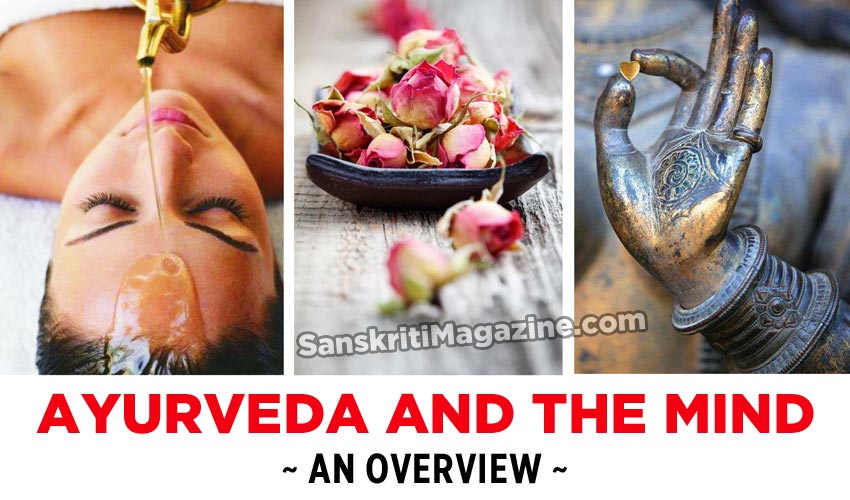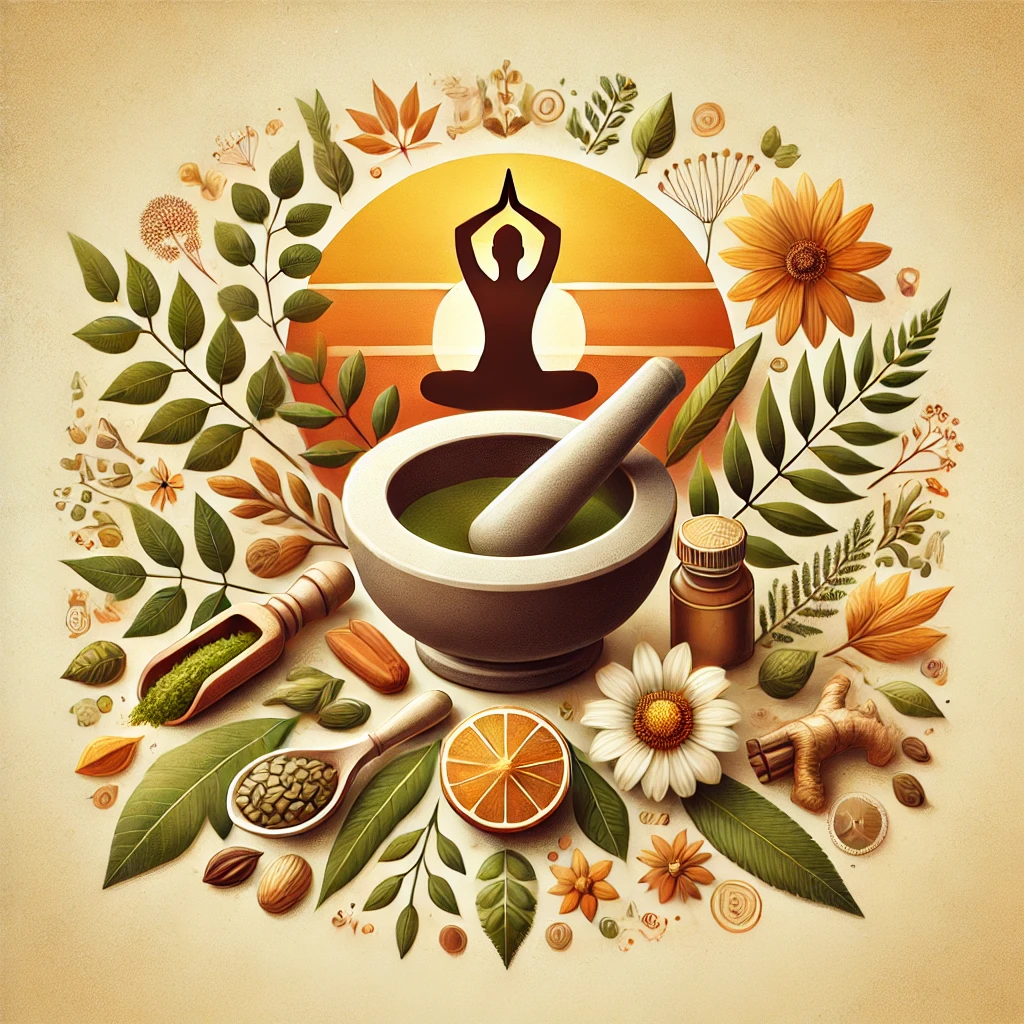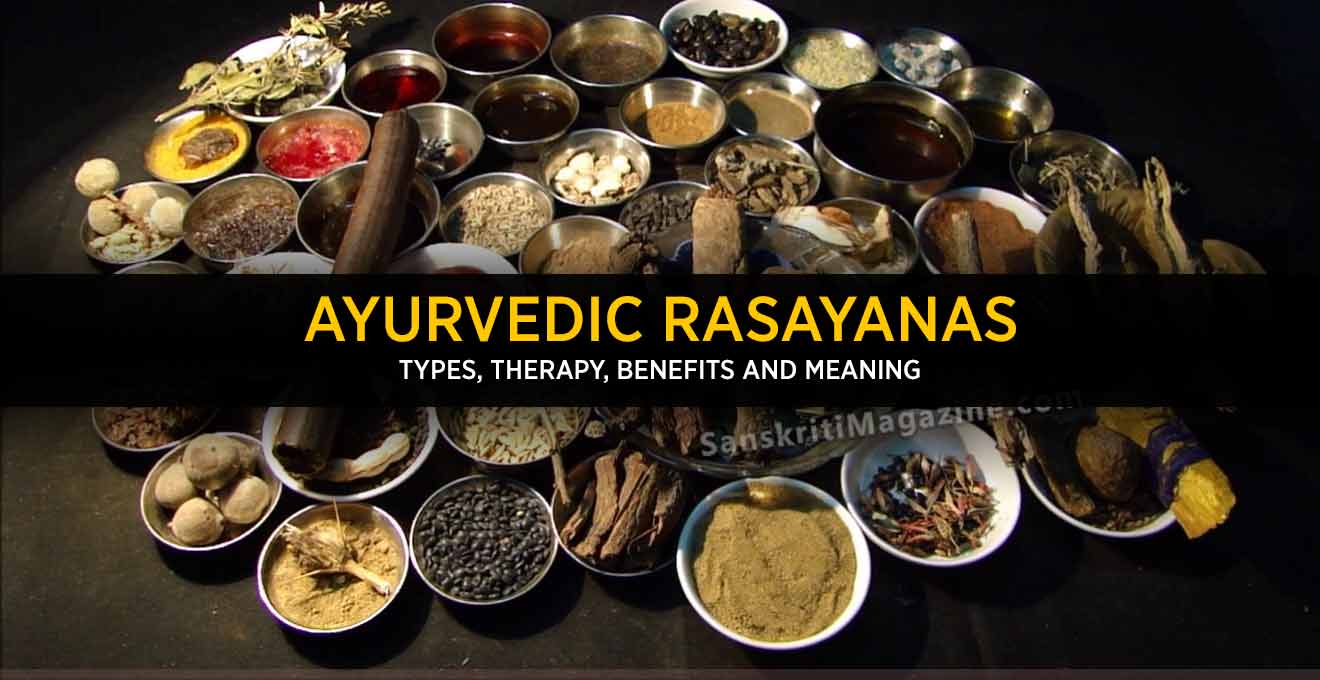Ayurveda is inherently a psychological as much as it is a physical system of medicine. Its scope of practice includes both physical (sharirika) and mental (manasika) diseases. Therefore, we cannot really understand Ayurveda without looking at its view of the mind and consciousness.
The examination of the mind and psychological diseases in Ayurveda is potentially as complex as its examination of the body and physical diseases. It is not just a sidelight to be looked at in passing. It requires its own expertise, attention and application, just as any other branch of Ayurveda and its therapeutic methods. While one doesn’t have to be a trained psychologist in order to deal with the psychological aspect of Ayurveda, any more than one has to be a medical doctor to deal with its physical aspects, one does have to do some study of the mind and how it works.
I have always tried to bring the psychological aspect of Ayurveda into my various books and course material, including the book Ayurveda and the Mind. We cannot do justice to Ayurveda without it. In this short article, I will try to provide an overview of the subject, to encourage the student to go deeper into this subject.
Traditional Ayurveda recognizes three main causes of disease:
1. Doshic imbalances, either by constitution or by external factors.
2. Excess of rajas and tamas in the mind.
3. Karmic factors or results of previous actions.
These three factors are generally related to some degree, though one is usually dominant. Doshic imbalances usually rest upon an excess of rajas or tamas, which in turn reflect deeper karmic disharmonies. Ayurvedic treatment is threefold in order to counter these.
1. Rational therapy to counter the doshas, as in the application of appropriate foods, herbs and clinical therapies of opposite energies to the doshic disharmonies.
2. Yoga therapy and sattvic therapy to counter rajas and tamas, as in the use of asana, pranayama, mantra and meditation.
3. Spiritual methods to reduce karma, as in the use of rituals, mantras and the use of deities.
These three treatment methods usually crossover and aspects of each may be used relative to the same client or condition. The mind as a factor and psychological/emotional issues is present on all these levels.
The doshas as they accumulate as toxins have negative emotional components like Vata as fear, Pitta as anger and Kapha as attachment as all Ayurvedic students are well aware of. Vata dosha in particular has strong psychological ramifications because the mind is part of the sphere of Vata and also composed mainly of the same air and ether elements. Vata problems usually include psychological problems, starting with fear, insecurity and anxiety. Management of Vata always must include a lot of psychology.
Pain of any type first imbalances Vata, so pain management of any type will involve a strong component of anti-Vata considerations. Stress also tends to first imbalance Vata; so much of stress relief is anti-Vata in scope and orientation.
Yet the other two doshas have their own key psychological components and considerations as well. Each patient will have a particularly psychological as well as physical energetic that we must be able to understand in order to arrive at an effective treatment plan.
The three gunas are mainly psychological factors with rajas as ego-driven impulses and tamas as deeper emotional blockages, insensitivity or addictions. These make the doshas hard to deal with as they may create attitudes that resist the treatment even on an outer level of diet and herbs.
Yet doshas and gunas should always be cross-referenced and treated together. For example, deep-seated doshic imbalances will always involve some degree of tamas, which often translates as deep-seated trauma, pain or debility. A good Ayurvedic practitioner should be able to discriminate the different conditions of each dosha in its sattvic, rajasic and tamasic modes, such as I outlined in my book Ayurvedic Healing. This is a good foundation on which to approach an Ayurvedic psychology.
Negative karma arises mainly from wrong judgment (Prajnaparadha or Buddhi dosha), which includes the wrong use of the senses, prana, emotions and mind. It represents the effect of long term doshic and gunic distortions as they become lodged in the psyche. Such wrong judgment begins with rajas, as it involves a factor of willfulness. Yet it also reflects tamas over time as it indicates tendencies the person is unable to see, recognize or change. Ayurveda not just about removing the doshas and increasing sattva guna but also eliminating the negative karmas and karmic patterns (samskaras) which sustain them in our own behavior. Vedic astrology is an important tool in helping us understand these karmas.
When we think of Ayurvedic practice, therefore, we must recognize the psychology of doshas, gunas and karmas. In this scheme, the mind has the main role, the body is just the place where these imbalances get lodged, manifest or cause diseases.
Ayurveda and Counseling
On top of these general psychological considerations, Ayurveda, particularly in the West today is largely a counseling based system of medicine. Much of its work consists of educating the patient how to change their life-style to prevent disease from arising and to optimize their health, as well as to treat specific diseases. While this may center outwardly on dietary, herbal and exercise recommendations, it requires an understanding of the psychology of people. Otherwise we will not have the proper rapport with the patient to ensure right communication and compliance with treatment recommendations.
 How we relate to a Vata person to calm their anxiety about such changes we suggest will be different than how we deal with a Kapha person and their complacency or a Pitta person with hidden anger issues. Their psychology will greatly color how such recommendations are made and whether they will work, even if they are appropriate begin with. It is not enough in Ayurveda that we as practitioners can arrive at a correct diagnosis and treatment plan; we must have the counseling skills to enable patients to effectively implement these. When Ayurvedic treatment fails, it is usually owing to the inability of the practitioner to understand the psychology of the patient well enough to get them to stick with their Ayurvedic recommendations.
How we relate to a Vata person to calm their anxiety about such changes we suggest will be different than how we deal with a Kapha person and their complacency or a Pitta person with hidden anger issues. Their psychology will greatly color how such recommendations are made and whether they will work, even if they are appropriate begin with. It is not enough in Ayurveda that we as practitioners can arrive at a correct diagnosis and treatment plan; we must have the counseling skills to enable patients to effectively implement these. When Ayurvedic treatment fails, it is usually owing to the inability of the practitioner to understand the psychology of the patient well enough to get them to stick with their Ayurvedic recommendations.
Physical and Psychological Suffering
In addition, the West today has a lot more psychological than physical suffering. Modern medicine has been relatively effective in alleviating many acute diseases, but emotional suffering has increased owing to various factors of our modern life out of harmony with nature.
Mental-psychological conditions like depression are almost epidemic today. Even children are commonly suffering from conditions like Attention deficit disorder (ADD) or hyperactivity. The current drug-based medicine is developing special designer medications to treat these conditions, though such powerful drugs are also problematical and involve many side affects. Ayurveda can provide a good alternative to this treating of the mind and psychology mainly through drugs. This cultural disturbed psychology requires that Ayurvedic practitioners have the psychological tools to deal with it.
In fact, any high Vata disturbed patient is likely to come away with a recommendation of such drugs if they see the usual type of doctors today. The problem is such drugs may only suppress Vata, not correct. So we have to be particularly careful to protect Vata types from getting into the drug based medical system, as they may never get out.
Many of the patients who come to Ayurvedic practitioners today do so seeking some spiritual or psychological relief. They are coming to Ayurveda as a mind-body medicine with a spiritual basis. They will expect that the Ayurvedic practitioner can handle emotional and spiritual issues and not just treat them on a physical level. So Ayurveda’s role as a psychology is quite important in the west today.
Relative to psychology and Ayurveda, however, there is not easy information available. Such topics are scattered throughout the Ayurvedic classics like Charaka and Sushruta rather than organized in one place only. They also cross over with spiritual concerns and teachings about Yoga.
So one of the main needs of Ayurveda today is to present a better psychological model that is useful in the present cultural context. Many Ayurvedic teachers in the West have aided in this process. Most Ayurvedic practitioners have to face the challenges involved.
Ayurvedic Psychology and Yoga
Classical Yoga as described in the Yoga Sutras of Patanjali and in the Bhagavad Gita is a means of working on the mind or calming the chitta, which is the basis for removing suffering. Ayurveda’s psychological therapy of increasing sattva is mainly a yoga therapy. Classical Yoga itself is mainly a psychology. This means that Ayurvedic psychology must employ the tools and views of Yoga.
Some Yoga teachers have tried to address the psychological application of Yoga and create a new psychological model of Yoga. But they usually do so apart from Ayurveda and sometimes apart from the greater Yoga tradition. That work may have some value but will be more useful if integrated into a greater Ayurvedic approach. Yoga psychology requires Ayurvedic psychology as well and neither is like to flourish or develop properly without the other.
Models of the Mind
Ayurveda usually employs the Samkhya-Vedanta model of the mind, which is divided as the fourfold internal instrument (antahkarana chatushtya).
1. Chitta – Conditioned consciousness
2. Buddhi – Intelligent judgment
3. Manas – Mind, capacity of imagination
4. Ahamkara – Ego
These Sanskrit terms do not have exact English equivalents and have some variation in their usage.
In Yoga terminology, chitta is often a general term for the mind as a whole, with manas standing for the sensory mind. In Vedantic terminology, manas more commonly assume the role as meaning the mind as a whole, with chitta meaning more the memory bank.
Generally, chitta is the general field of mental disturbances (vrittis or kleshas of Yoga) that need to be calmed or removed. Buddhi is the higher discriminating intelligence that we must develop in order to remove these disturbances and gain such peace of mind. Manas is the outer mental and sensory activity that keeps these disturbances in motion and needs to be controlled. Ahamkara is the factor of ego or self-will which keeps this process in motion.
This means that ways of calming the chitta, developing the buddhi, controlling the manas and reducing ahamkara are essential to any Ayurvedic approach to the mind.
We can also discriminate how each of the doshas and each of the gunas affects each level of the mind. For example, Vata in the chitta would be a fairly deep seated anxiety disturbance. If it is tamasic, it will be involved with a lot of self-negativity and possibly suicidal tendencies.
Ayurveda is concerned with the elimination of the pranic doshas of Vata, Pitta and Kapha and the mental doshas or rajas and tamas from the mental field and from each of these four levels of the mind. Increasing the buddhi or higher intelligence of the client through study and meditation is a key to this process. Of course there is always the key issue of translating these terms and insights into common language for the patient and using them to develop workable strategies of life-style improvement.
Yet Ayurveda presents an integral and practical psychology. It does not isolate the mind from the body but shows how the body, prana and senses not only impact the mind and psychology but can be used to treat them.
Mind and Prana
Ayurveda and Yoga look at the mind and prana as like the two wings of a bird. The mind is the power of knowledge (jnana-shakti) and the prana is the power of action (prana-shakti). The mind is a deeper level of awareness than the outer pranas operative in the sense and motor organs. Yet the original prana is a deeper level of awareness than the thinking mind. It is into that deeper prana that we return to in the state of deep sleep for renewal of both body and mind.
We cannot treat the mind without treating prana, which requires yogic practices of pranayama and pratyahara. And we cannot treat prana without considering the doshas of Vata, Pitta and Kapha, which are mainly pranic doshas or pranic imbalances. This means correcting the diet, adding helpful herbs and other Ayurvedic massage and cleansing methods like Pancha Karma.
 Mantra is the main healing tool specific to the mind, though it has strong impacts on the prana as well. The use of mantra and pranayama together is a good way to do this.
Mantra is the main healing tool specific to the mind, though it has strong impacts on the prana as well. The use of mantra and pranayama together is a good way to do this.
Mind and Self
Ayurveda follows a Samkhya-Vedantic view in which the mind is just an instrument of consciousness, the real Self, Atman or Purusha. This view is different than most other schools of thought in which mind and consciousness are usually identified or regarded as the same. In treating the mind, we must remember this greater Vedic view that our true being and awareness transcends both body and mind. The purpose of Yoga and Ayurveda is not just mental harmony but bringing the mind to a tranquil condition so that the light of the higher Self can come through the mind.
Ayurvedic psychology takes us to self-examination and Self-realization. It doesn’t end in the mind. In this regard, it warns us not to get too caught in the mind. The best way to harmonize the mind is to return to the Self behind the mind and its stream of thoughts.
Conclusion
Modern Ayurveda in India, with its joint Ayurveda-allopathic training, has reduced both the yogic and psychological components of traditional Ayurveda. Western Ayurveda, with its yogic and naturalistic background, as well as its application in the western context of psychological unhappiness, has a greater interest and need for this psychological aspect of Ayurveda. A revival of Ayurvedic psychological is an important consideration, if not prime trend, for the new global Ayurveda.
Yet whether it is the application of diet, herbs, massage, Pancha Karma, life-style changes, mantra or meditation, the psychological component of Ayurveda is always important and should be thoroughly grasped by the serious student. Ayurvedic psychology can also be a good field of specialization as well.
I would also like to direct the reader to the works of British/German psychologist Reinhard Kowalski who has done much work in this area, as in his book ‘The Only Way Out is in’. He is a good example of a psychologist, in his case working in the British Health Care System, who has been able to integrate Ayurveda into his practice.
The author Dr David Frawley (Pt Vamadeva Shastri) is an accomplished and highly respected scholar on Indic studies. He is the founder of The American Institute of Vedic Studies. To know more about his work visit VedaNet.











